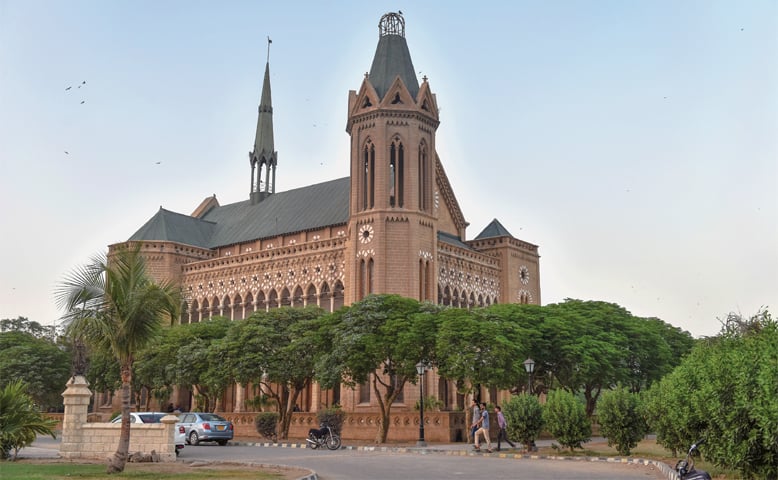Frere Hall Karachi stands as a proud testament to Karachi’s rich colonial history and architectural grandeur. Known for its Venetian-Gothic design, this historic building has not only served as a cultural and educational hub but also as a symbol of Karachi’s transformation under British rule. From its architectural beauty to its cultural significance, Frere Hall Karachi Pakistan, remains one of Karachi’s most iconic landmarks. In this article, we explore the history, architecture, cultural significance, and visitor information of Frere Hall.
Key Facts About Frere Hall
| Attribute | Details |
| Name | Frere Hall |
| Frere Hall Location | Civil Lines, Karachi, Pakistan |
| Construction Period | 1863 – 1865 |
| Architect | Henry Saint Clair Wilkins |
| Style | Venetian-Gothic |
| Materials | Yellow limestone, red & grey sandstone, white oolite stone |
| Notable Features | Pointed arches, ribbed vaults, flying buttresses, and quatrefoils |
| Cultural Significance | Frere Hall Library, Sadequain Art Gallery, Frere Hall events |
| Frere Hall Karachi Visitor Timings | 9:00 AM – 5:00 PM |
| Entry Fee | Free (special events may charge) |
Frere Hall History
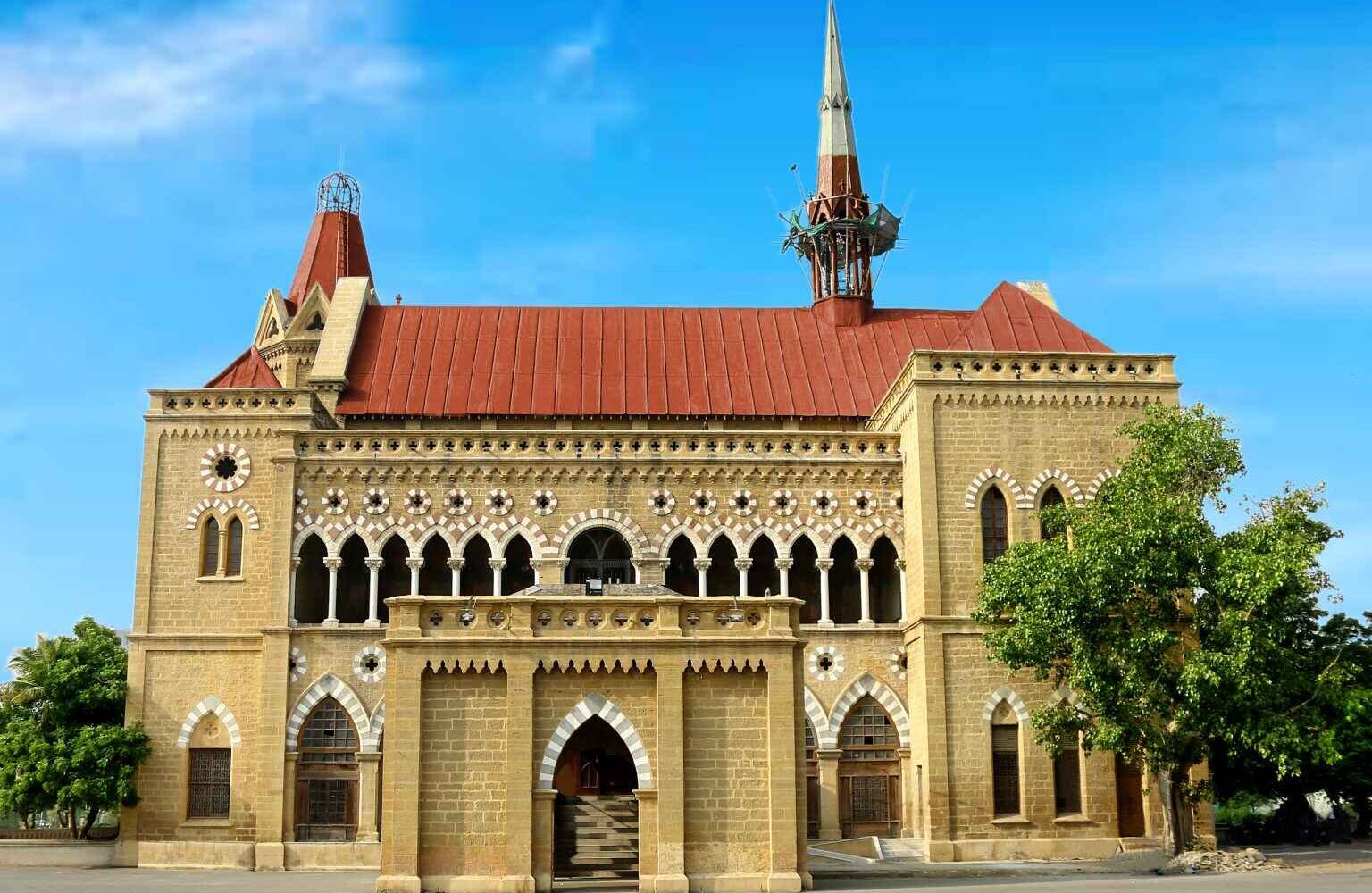
Frere Hall’s history dates back to the mid-19th century during the British colonial period. The hall was commissioned by Sir Henry Bartle Edward Frere, the British Commissioner of Sindh, in 1863 as part of his vision to modernise Karachi and create public civic spaces. Construction was overseen by British architect Henry Saint Clair Wilkins and completed in 1865.
- Naming: The building was named in honour of Frere, who was instrumental in developing Karachi’s infrastructure, civic planning, and social initiatives.
- Post-Independence Use: After Pakistan’s independence in 1947, Frere Hall served multiple roles, including housing the National Museum of Pakistan until 1970. Later, it evolved into a cultural, educational, and community hub, reflecting the city’s rich colonial and post-colonial history.
- Symbolism: Frere Hall, Karachi, Pakistan, stands as a physical representation of Karachi’s historical transformation, bridging colonial influence with modern-day heritage preservation.
Today, Frere Hall’s history reflects both architectural significance and the city’s socio-cultural evolution, making it an essential landmark for historians, architects, and tourists alike.
Architectural Design
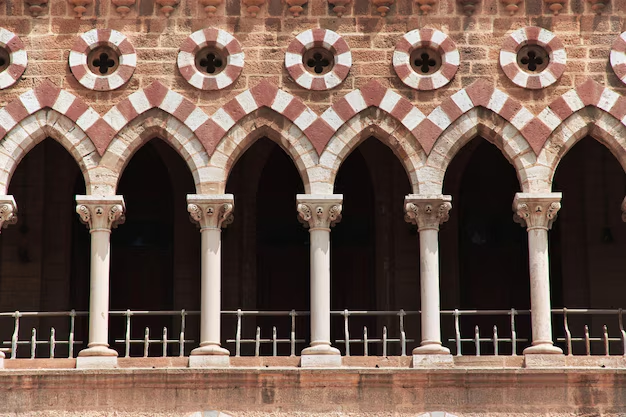
The architectural design of Frere Hall is a masterpiece of Venetian-Gothic architecture, blending European design with local materials and techniques. Its grand scale and intricate detailing make it a prime example of colonial-era architecture in Pakistan.
Key Design Features
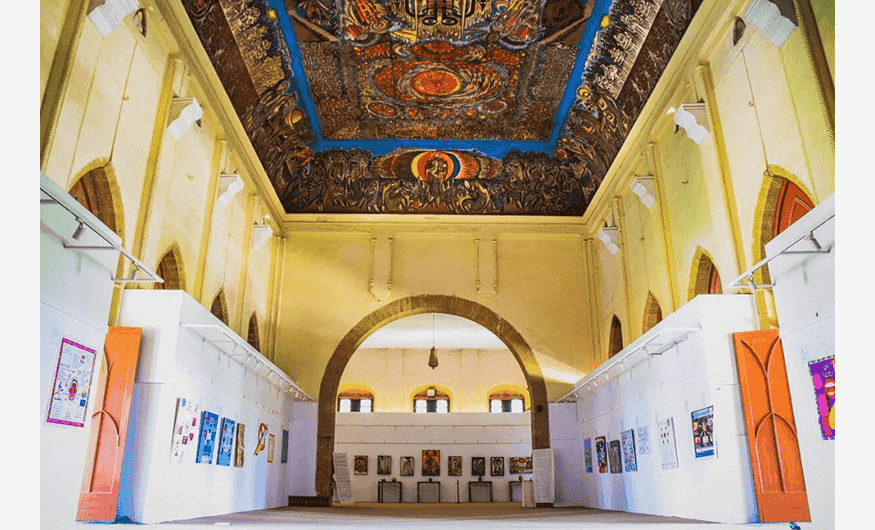
- Pointed Arches and Ribbed Vaults: Gothic elements that provide height, elegance, and a sense of spaciousness.
- Flying Buttresses and Quatrefoils: Both decorative and structural, enhancing visual appeal and stability.
- Galerie Sadequain: The ceilings feature murals by the renowned Pakistani artist Sadequain, illustrating cultural, historical, and artistic themes. These murals are part of the Sadequain Art Gallery, making the hall a creative as well as architectural landmark.
Materials Used
- Yellow limestone sourced from Karachi.
- Red and grey sandstone from Jungshahi.
- White oolite stone from Bholari.
The combination of locally sourced and imported materials ensures both durability and aesthetic sophistication. The building’s symmetry, arches, and floral motifs reflect the fusion of European Gothic and South Asian architectural styles, making it visually striking and historically significant.
Frere Hall Library and Cultural Significance
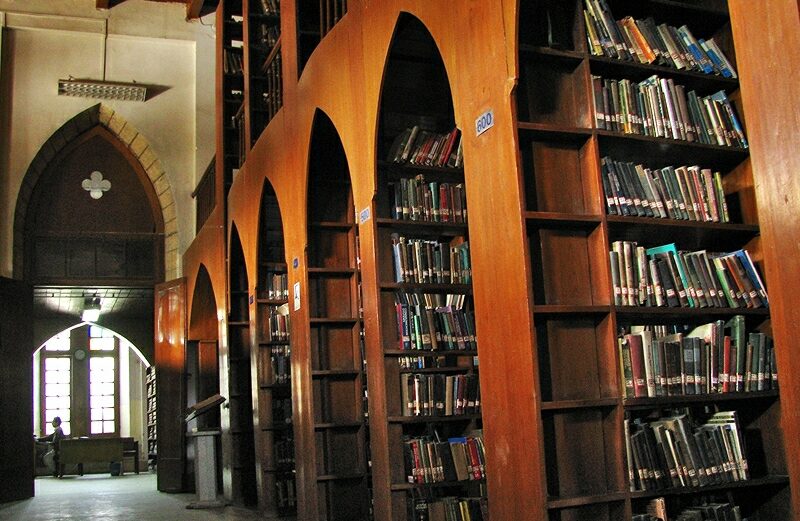
A key component of Frere Hall is the Frere Hall Library, also known as the Liaquat National Library, which enhances its role as a centre of learning and culture.
- Library Collection: Holds over 70,000 books, covering history, literature, science, and regional studies.
- Frere Hall Library Hours: The library is open daily from 9:00 AM to 5:00 PM, in line with the general visiting hours.
- Art and Cultural Hub: The Sadequain murals and rotating exhibitions within the hall make it a vibrant space for Frere Hall events, including art exhibitions, literary seminars, and educational workshops.
- Heritage Status: Declared a protected heritage site in 1985, preserving both its cultural and historical significance.
The Frere Hall Library not only serves as a hub for research and reading but also complements the artistic and cultural functions of the hall, making it a central point for Karachi’s intellectual and cultural community.
Visitor Information
For visitors, Frere Hall in Karachi, Pakistan, offers a blend of historical learning, artistic exposure, and leisure opportunities.
Location and Accessibility
- Frere Hall location: Situated in Civil Lines, Karachi, between Abdullah Haroon Road and Fatima Jinnah Road.
- Accessible via public transport, taxis, and private vehicles, with nearby parking facilities for convenience.
Frere Hall Karachi Timings
- Open daily from 9:00 AM to 5:00 PM.
- Frere Hall Sunday timings: The hall is closed on Sundays, so visitors should plan accordingly.
Entry Fees
- General entry is complimentary, while some Frere Hall events may require nominal charges or prior booking.
Best Time to Visit
- Morning: Ideal for quiet exploration and photography with soft natural light.
- Afternoon/Evening: Great for capturing the hall’s architectural features, particularly the Sadequain murals and surrounding gardens.
Preservation and Conservation Efforts
Maintaining the historical and architectural integrity of Frere Hall is crucial for future generations.
- Structural Maintenance: Continuous upkeep ensures the Venetian-Gothic features, arches, and Sadequain murals remain intact.
- Lighting and Landscaping: Night illumination highlights the hall’s architecture, and landscaped gardens enhance the visitor experience.
- Community Engagement: Heritage authorities organise awareness programs and tours, emphasising the importance of preserving cultural landmarks.
- Protection Status: Recognised as a protected heritage site, Frere Hall continues to benefit from conservation policies that safeguard both its physical structure and cultural artefacts.
Through these efforts, Frere Hall in Karachi, Pakistan, remains a living monument, bridging history, art, and public education.
For more information on similar historic buildings, such as the Badshahi Masjid in Lahore, visit Chakor blogs.

